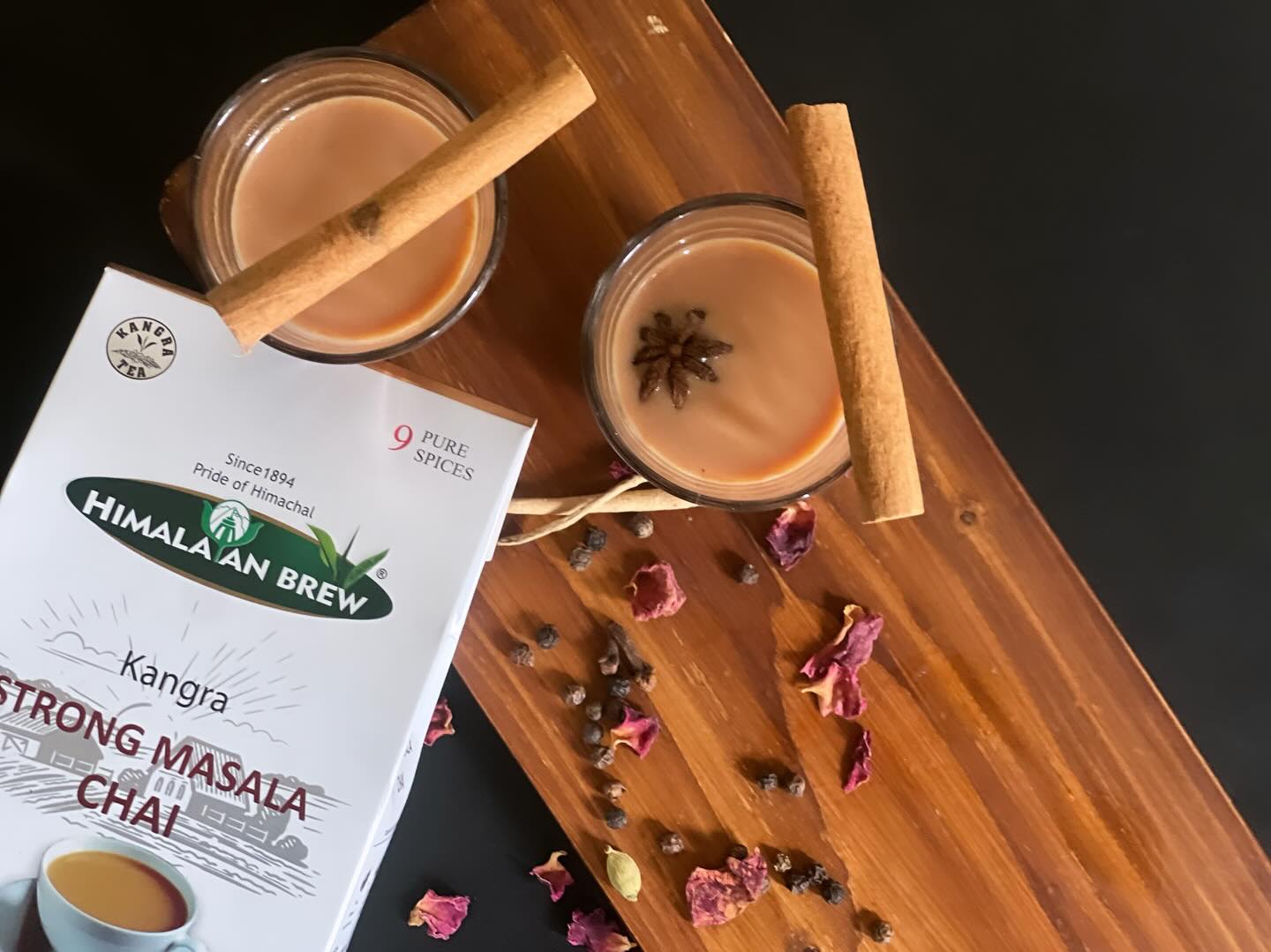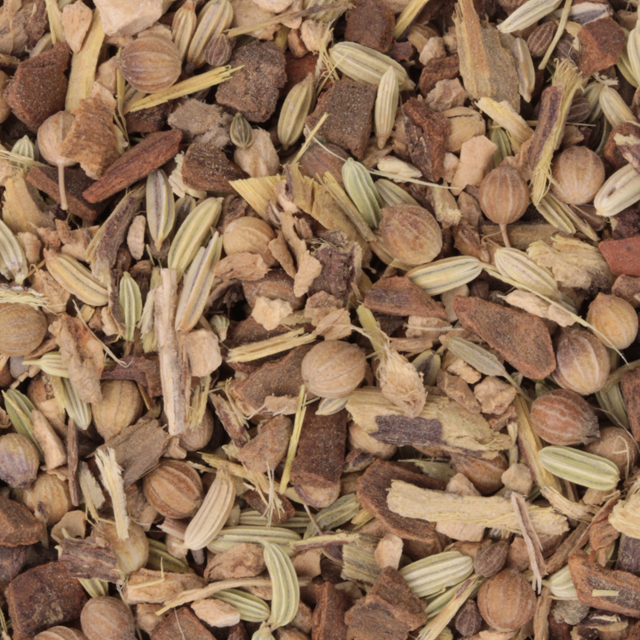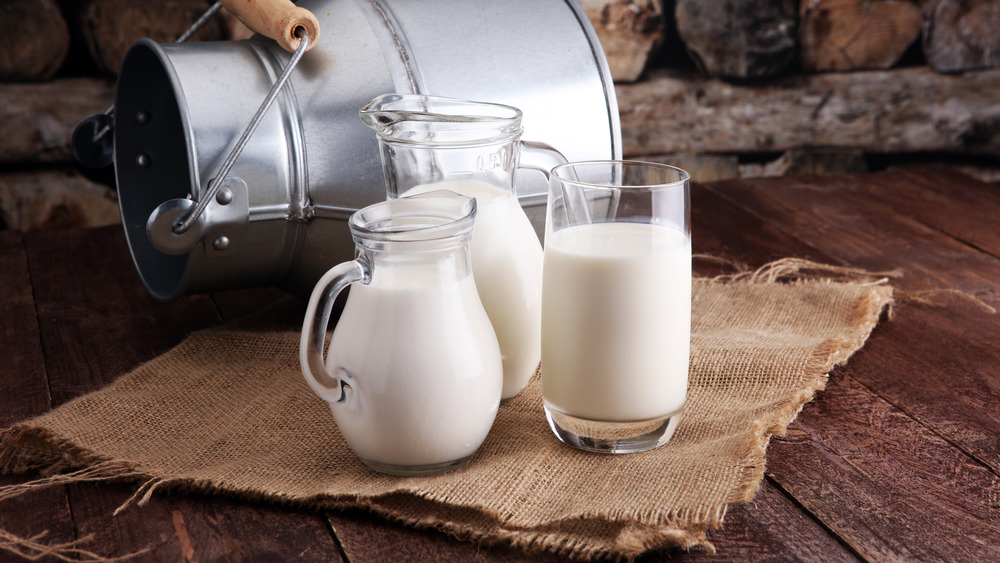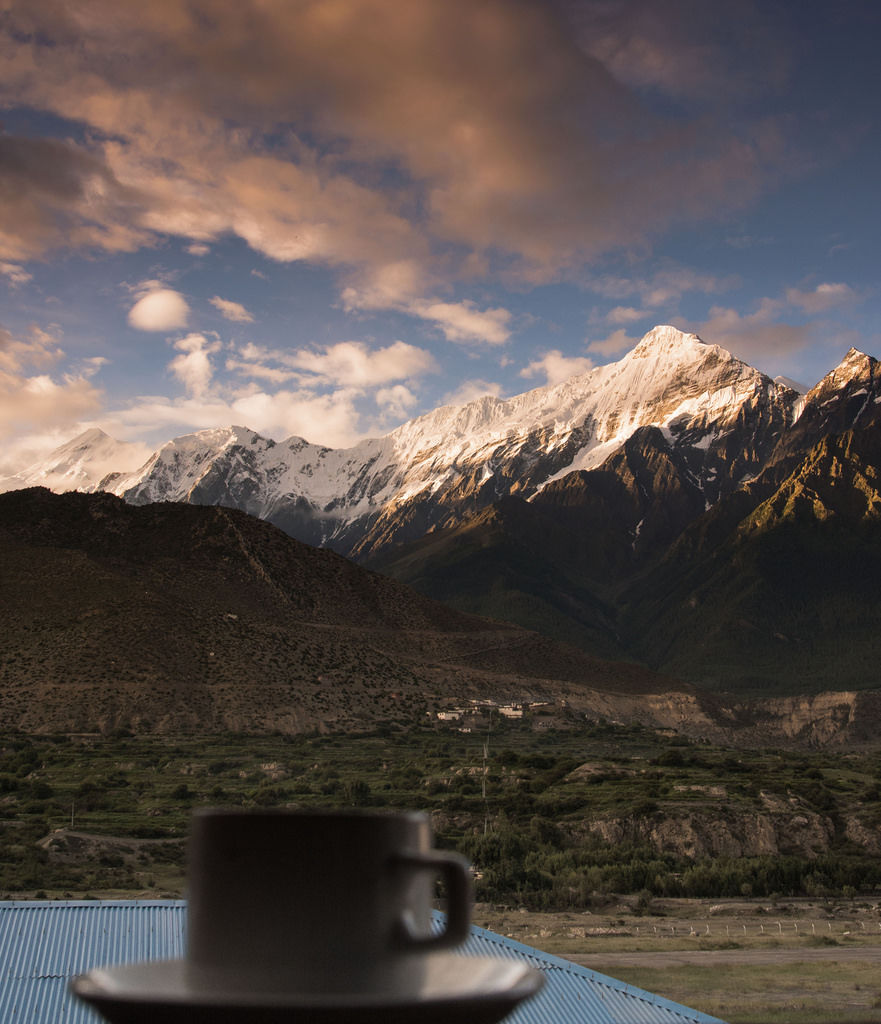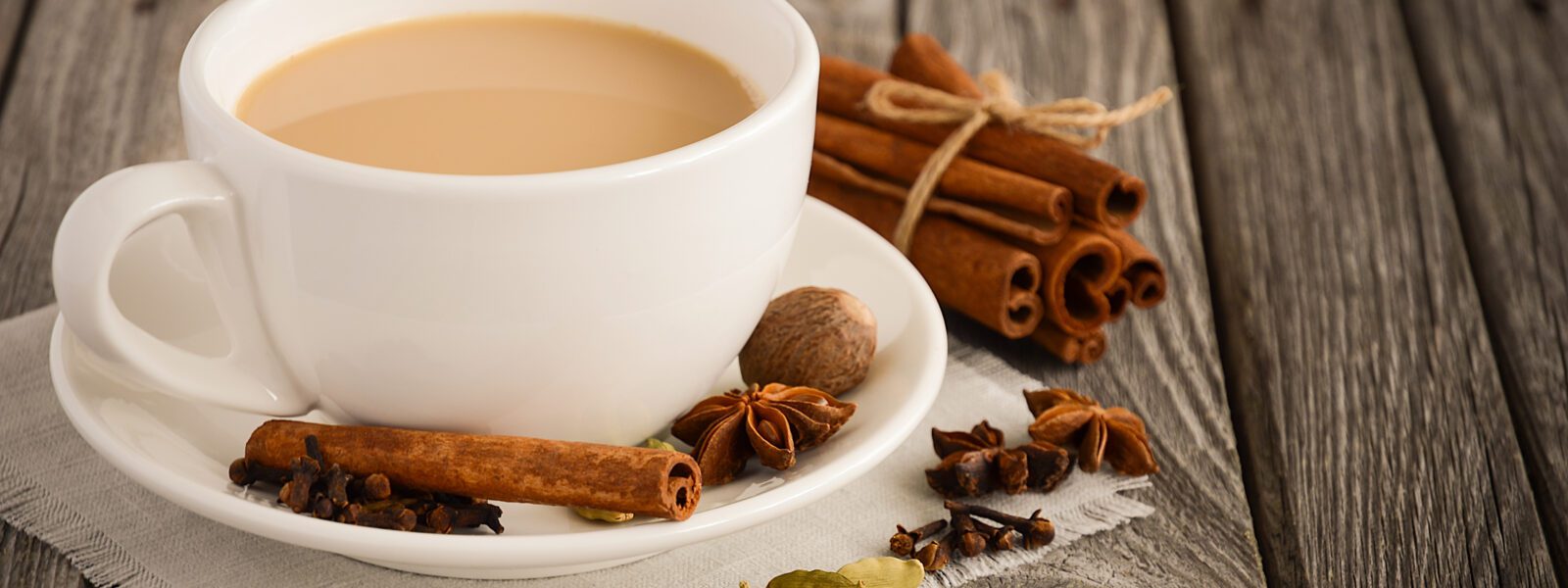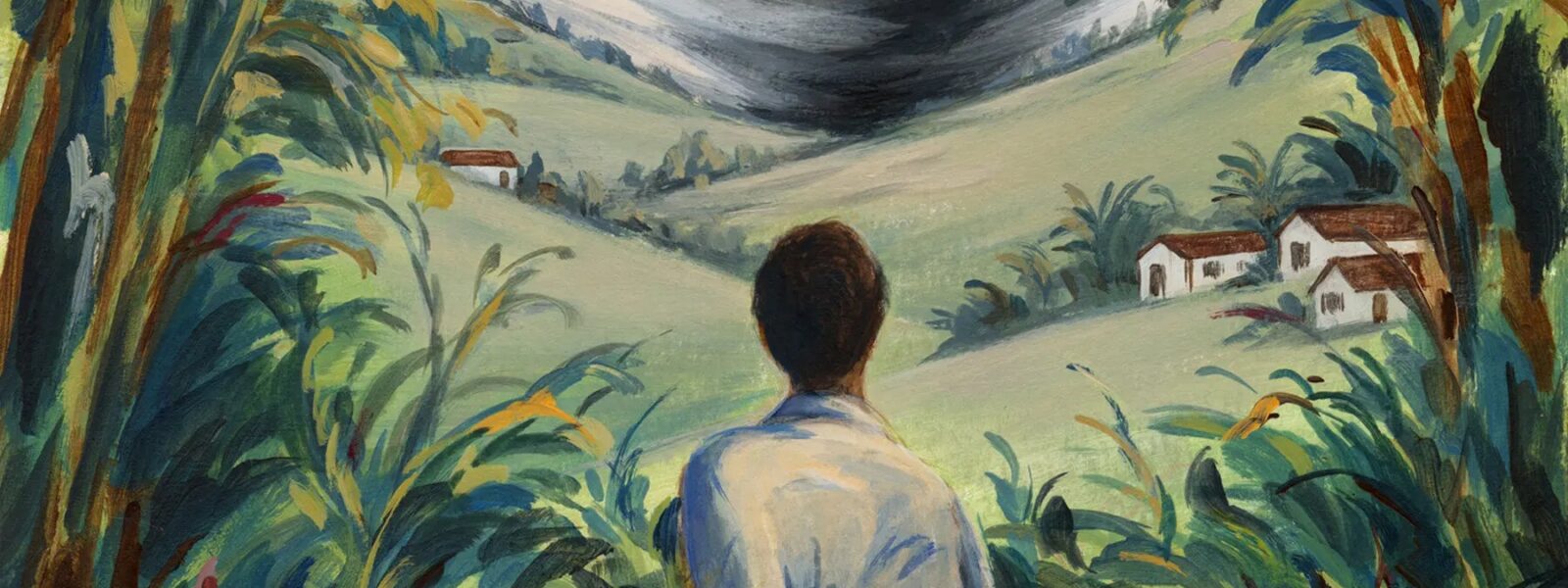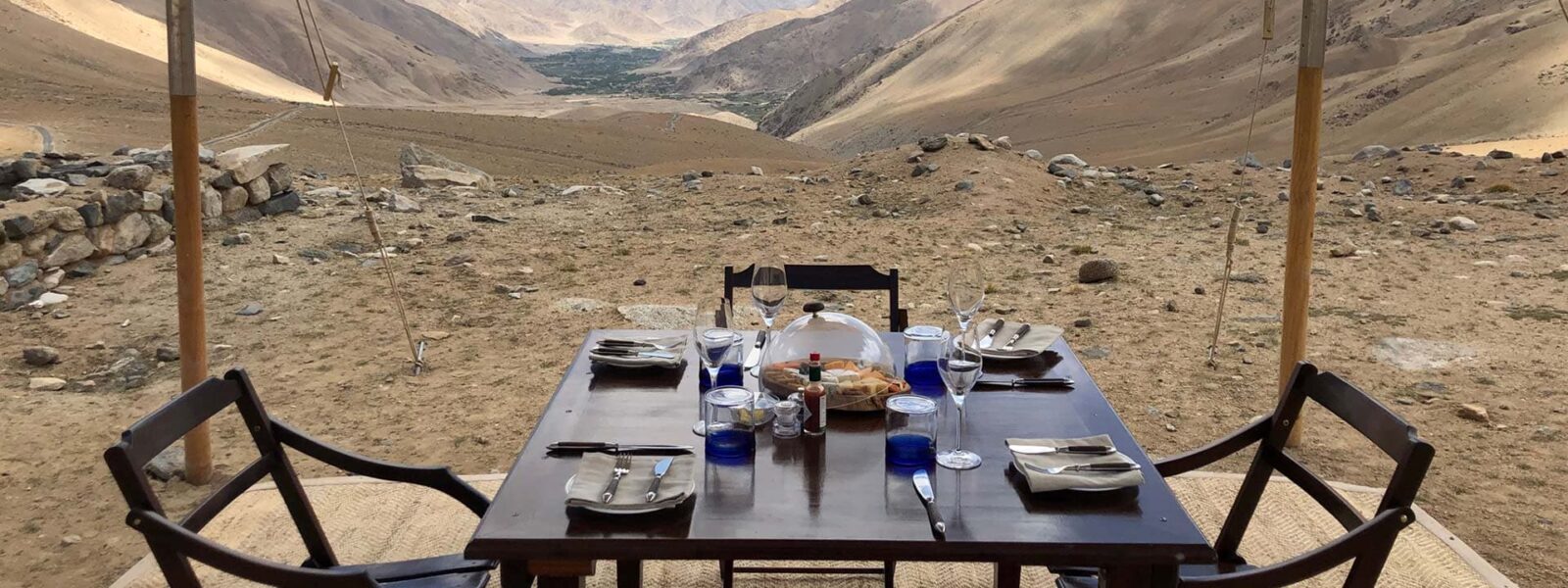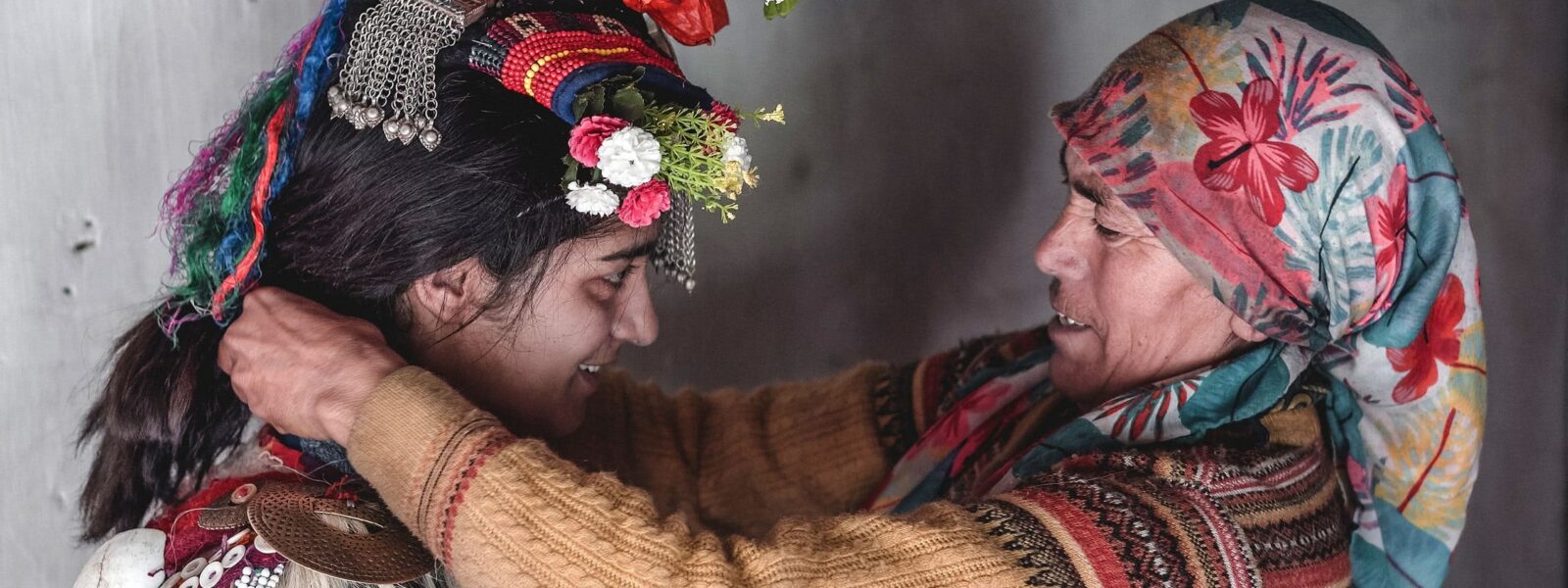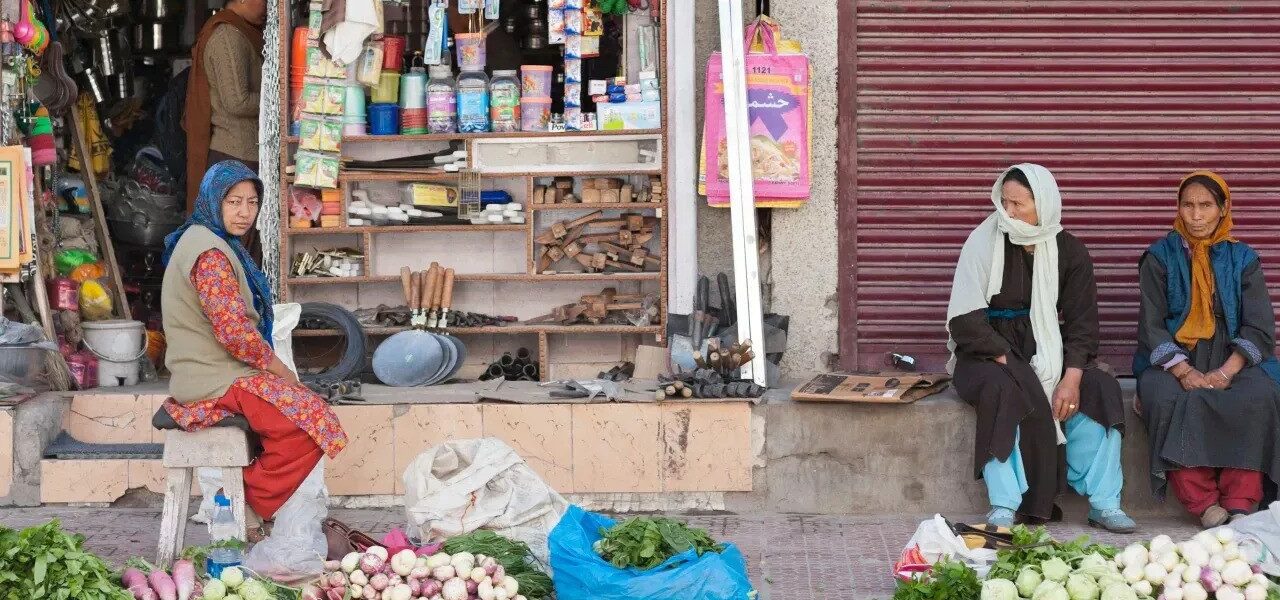A Cup of Chai in the Hills
I wake up in the stillness of dawn, the air crisp, with a hint of the Himalayas in the background. The soft hum of Tibetan prayers floats through the open window, carried by the morning breeze. My body refuses to move until Bhutti, my roommate, enters the room, her voice soft but insistent: “You want some tea, Emy?”
The day begins like this. Always with tea.
At the college, nestled in the foothills of Dharamsala, we live by the rhythm of chai. Mornings spill into afternoons, and afternoons into evenings, all punctuated by cups of milky, sweet tea. It’s not a choice; it’s the pulse of the place.
By 10:00, the bell rings, and students flow from classrooms, a wave of robes and laughter. The Tibetan students move quickly, wordlessly, their bowls emptying faster than they fill. There’s no lingering. They head straight for the shack behind the girls’ dorm, where the chai is stronger, darker, richer. They stand there, sipping from small glass cups, letting the warmth soak into their bones before disappearing into the day’s next task.

For the rest of us, the Americans, there’s a different pace. We’re slower, still learning the art of moving with purpose. But chai waits for no one. We hurry through our meals to catch the moment—the small cups, the shared laughter, the quiet ritual before the world turns again.
In the evenings, the students gather at a small store, a corner of the campus that feels both old and new. The smell of incense mixes with the sharp notes of chai, and Daddy Yankee’s “Gasolina” blasts from the radio as the shop owner dances, a bit of modernity in a place lost to time.
But this drink, this chai, is a gift from a not-so-distant past. Tea wasn’t always part of India’s story. It took the British to make it so, with their polished marketing, their aristocratic gatherings, their factory workers clutching cups on short breaks. Slowly, tea became India’s heartbeat, an unshakable part of daily life.
I stand beside Rita as she begins to brew. There’s a rhythm to it, a ritual in every motion. She crushes the ginger with the side of a knife, the cardamom following, each pod releasing its perfume into the air. The pot simmers, the water swirling as the ginger’s spice rises with the steam, stinging the eyes, clearing the mind. Cardamom lingers, a softer note, familiar, like a holiday from a distant place.

And then, as the first bubbles form at the bottom of the pot, the tea is added, swirling into the mixture like ink in water, completing the transformation.
We drink our chai slowly. In that moment, time stretches, the world outside pausing. It’s just us, the tea, and the mountains in the distance.
The Taste of Morning: Chai and Memory
In the quiet mornings of Brussels, before the world wakes up, Rita and I prepare chai. She’s a nanny for an American family, but our mornings belong to us. No sugar, skim milk, and British tea bags—simple and precise. As she stirs the pot, she tells me about the neighbors, their small lives filling the air like steam rising from the kettle.
The tea isn’t quite like the chai I had in India. It lacks the bite of ginger, the warmth of cinnamon, the punch of peppercorns. In India, chai is not just a drink, but a concoction of spices built on ancient traditions. Cardamom, ginger, pepper—they don’t just flavor the tea; they ground it in something old, something medicinal. But Rita’s chai is a different kind of ritual. A conversation in a cup.
It’s been weeks since I returned from India, and I feel hollow, lost in the spaces between routine. I try to make chai at home, searching for something to hold onto. The first attempt, with Lipton, falls flat. The taste is thin, a shadow of what it should be. Eventually, I find Assam tea at an Indian grocery store in Atlanta. It comes in tiny, dark pellets, almost like black sand. When the bag splits, they spill everywhere, rolling across the counter like scattered thoughts.
I don’t measure. I just toss a few spoonfuls into boiling water, watching as the pellets unravel, painting the water an intense, rich brown. The aroma is earthy, like wet grass after rain. It’s not quite right, but it’s close enough to bring back memories of those street-side chai stalls in India, where the tea brews thick, sweet, and full of life.
Chai is a common thread in India, a drink that crosses the divide between rich and poor. It tastes the same whether you’re sipping it from a glass in a dusty street stall or a delicate cup in a wealthy home. In a country of contrasts, chai brings a sense of unity, a shared moment, a pause in the day.
Back in the hills of Dharamsala, the mornings were cold. We’d huddle together, wrapping ourselves in wool shawls, chai glasses warm in our hands. Men in loose shirts, women in bright salwar kameez, an old farmer with his goat—we’d all gather at the street corner, waiting for the bus, watching the dust in the air catch the morning light. The tea was strong, syrupy with sugar, waking me up from the inside out. Bhutti, my roommate, would always add just a little more sugar to her cup, as if the sweetness could push away the morning chill.

There, in that golden light, with the taste of chai still on my lips, the world seemed to make sense, even if just for a moment.
The Alchemy of Chai: A Tale of Patience and Taste
“Not sweet enough?” I ask, incredulous. Bhutti’s laughter dances around the room like sunlight.
Lara, my American classmate, checks her watch with a frown. “The bus was supposed to arrive at 7:30, wasn’t it?” It’s now 7:35, and Ani Kelsang, the Buddhist nun, merely shrugs before ordering another round of tea for us.
As the day unfolds, every taste of sweetness clings to my teeth, mingling with the bus’s jostle through the rolling hills. We pass tea plantations and fields of golden mustard. The discomfort of the journey only fades when we finally reach the monastery guesthouse, where I gratefully brush away the taste of the day.
Whole milk, I remind myself. It’s essential.
If only I could share this chai with those I love, I muse. I wouldn’t need to describe the grimy roadside teashops, the tiny glasses of tea that barely hold more than a double shot, or the slow, languid pace of life mirrored by the wandering cows. We’d simply enjoy the essence of those moments, together.

Despite my best efforts with Assam CTC, my chai remains a disappointing pale shadow of what I remember. My frustration grows. The thought of those cows brings a sudden revelation: the milk at those roadside stalls was always fresh, straight from local farms or at least full-fat. The idea of skim milk is almost absurd in a land where getting enough nutrition is a daily struggle. I set the skim milk aside, determined.
Boil everything together until the milk begins to froth and threatens to spill over.
“No, Emy,” Bhutti says, gently gripping my wrist to stop me from turning off the stove, “you must wait, or it won’t taste right.” Her touch is firm but kind. This is the first time she has trusted me with such a task, and I’m determined to get it right.
We’re in Bhutti’s tiny village, nestled between the harsh peaks of Ladakh. Each day, I breathe the crisp mountain air and wander through lush barley and pea fields. Meanwhile, Bhutti and her family toil—plowing, irrigating, cooking, cleaning, and caring for goats and yaks.
Bhutti makes me wait until the milk rises almost to the edge of the pot. Then, with impeccable timing, she turns off the stove, letting the froth collapse in on itself. The following day, she’ll let me make the tea on my own.

Tea first, then work.
In Leh, the capital of Ladakh, we gather to make momos. The Americans eagerly reach for knives, ready for the long process of chopping cabbage, carrots, onions, and potatoes, and preparing dough. We’ve instructed the driver to return in two hours, and the pressure of time hangs over us. Our hostess, however, gestures for us to sit on the floor mats. “Tea first,” Wangmo insists, “then we work.”
Three hours later, we finally finish the momos. Someone brings a plate to the waiting cab driver, who grumbles but stays put.
Back in the US, I finally perfect my chai, achieving the right balance of tea, milk, sweetness, and spice. I serve it to my housemates. We sip together on a cold winter afternoon, laptops open and papers spread around us, savoring the taste of a journey well-traveled.
The Reference Article 非線形な物語:チャイの作り方
Chai Brewing Techniques
Chai Brewing Techniques | The article summarizes Chai Brewing Techniques ‘s transformative journey, likening it to effortless fishing where interaction Chai Brewing Techniques s naturally gravitated toward her. Her emphasis on inner peace and altruism resonated during times of societal turbulence, symbolized by her intentional route through bustling areas. Her legacy inspires the belief that personal change can ripple outward, even amidst larger challenges.

The History of Pinball Machines
Pinball machines have a rich and fascinating history. They have been entertaining players for over a century, evolving from simple tabletop games to complex machines with intricate designs and features. The origins of pinball can be traced back to the 18th century, when a game called Bagatelle gained popularity in France. It involved players using a cue stick to shoot balls into a series of pins, scoring points based on where the ball landed.
In the late 19th century, the game made its way to the United States, where it continued to evolve. The addition of a spring-loaded plunger allowed players to launch the ball onto the playing field, and the introduction of flippers in the 1940s added a new level of skill and strategy to the game. Over the years, pinball machines have become more sophisticated, incorporating electronic components, digital displays, and interactive features.
Why Visit a Chai Brewing Techniques ?
There are many reasons why you should visit a Chai Brewing Techniques . Firstly, it’s a great way to support local businesses. Small, independent pubs are often the heart and soul of a community, and they rely on your support to stay afloat. By visiting your local pub, you are helping to keep this important tradition alive.
Secondly, pubs are a great place to socialize and meet new people. Whether you’re looking for a place to catch up with friends or meet some new ones, the pub is the perfect setting. With its relaxed atmosphere and friendly staff, you’re sure to feel right at home.

Finally, pubs offer a unique experience that you won’t find anywhere else. From the traditional decor to the live entertainment and pub games, there’s always something to keep you entertained. Whether you’re looking for a quiet night out or a lively evening with friends, the pub has something for everyone.
Finding the Best Chai Brewing Techniques in Your Area
Finding the best Chai Brewing Techniques in your area can be a daunting task, especially if you’re new to the area. However, there are a few things you can do to make the process easier. Firstly, ask around. Talk to your friends and family and see if they have any recommendations. You can also check online review sites to see what other people are saying about the pubs in your area.

Another great way to find the best pubs in your area is to go on a pub crawl. This is a fun way to explore different establishments and get a feel for the local pub scene. Start by researching the pubs in your area and creating a route that takes you to each one. Make sure to pace yourself and enjoy each pub to its fullest.
Pub Atmosphere and Decor
One of the things that makes Chai Brewing Techniques so special is their atmosphere and decor. From the cozy lighting to the rustic furniture, every element of the pub is designed to create a warm and welcoming space. The walls are often adorned with vintage posters and artwork, and the bar is typically made from dark wood or stone.

The lighting is also an important part of the pub atmosphere. Many pubs use low lighting to create a cozy, intimate feel. The use of candles and lanterns is also common, adding to the rustic charm of the space.
Chai Brewing Techniques
No visit to an English pub would be complete without sampling some of the traditional pub food and drinks on offer. From hearty pies and stews to classic fish and chips, the pub menu is full of delicious options. Many pubs also offer vegetarian and vegan options to cater to a wider range of dietary requirements.

When it comes to drinks, beer is the most popular choice in Chai Brewing Techniques . From classic ales to refreshing lagers, there’s a beer for everyone. Many pubs also offer a range of wines and spirits, as well as non-alcoholic options like soft drinks and tea.
Chai Brewing Techniques
Live entertainment is another big part of the pub experience. Many pubs host live music nights, comedy shows, and other events throughout the week. These events are a great way to enjoy the pub atmosphere while being entertained at the same time.
Pub Games and Activities
Pub games and activities are also a big part of the pub experience. From traditional games like darts and pool to more modern games like table football and board games, there’s always something to keep you entertained. Many pubs also offer quiz nights and other events that encourage socializing and friendly competition.
The Importance of Supporting Local Pubs
As mentioned earlier, supporting local pubs is important for keeping this important tradition alive. Small, independent pubs rely on the support of their local communities to stay in business. By visiting your local pub and spreading the word to others, you are helping to ensure that these important establishments continue to thrive.
Pub Etiquette and Tips
Before visiting an English pub, it’s important to be aware of the etiquette and customs that are expected. Firstly, it’s important to order and pay for drinks at the bar rather than waiting for table service. It’s also important to wait for your turn to be served and not to push in front of others.
British Pub

When it comes to tipping, it’s not customary to tip at Chai Brewing Techniques . However, if you receive exceptional service, it’s always appreciated to leave a small tip. Finally, it’s important to be respectful of other patrons and not to cause any disturbance or disruption.
Conclusion: Enjoying the Chai Brewing Techniques
In conclusion, visiting an English Chai Brewing Techniques is a great way to unwind, socialize, and enjoy a unique cultural experience. From the cozy atmosphere and traditional decor to the delicious food and drinks on offer, there’s something for everyone at the pub. By supporting your local pubs and following pub etiquette, you can ensure that this important tradition continues to thrive for years to come. So why not grab some friends and head down to your local pub today?
As a lover of English culture, I have always been drawn to the charm of traditional Chai Brewing Techniques . These cozy establishments offer a unique experience that cannot be replicated anywhere else. Whether you’re a local or a tourist, there is always something special about finding a great Helena Chai Brewing Techniques . In this article, I will be exploring the best Chai Brewing Techniques in your area, discussing everything from the atmosphere and decor to the food, drinks, and entertainment on offer.
The Charm of Chai Brewing Techniques
There’s something special about the atmosphere of an English pub. These cozy, welcoming spaces are designed to make you feel right at home. With their low ceilings, wooden beams, and roaring fireplaces, Chai Brewing Techniques exude a sense of warmth and comfort that is hard to find anywhere else. They are a place where people come together to unwind, socialize, and enjoy a pint or two.

The history of Chai Brewing Techniques is also a big part of their charm. Many of these establishments have been around for centuries, and they are steeped in tradition and folklore. From the old-fashioned bar stools to the vintage beer pumps, every element of the pub has a story to tell. For lovers of history and culture, visiting an English pub is a must.
Why Visit a Chai Brewing Techniques ?
There are many reasons why you should visit a Chai Brewing Techniques . Firstly, it’s a great way to support local businesses. Small, independent pubs are often the heart and soul of a community, and they rely on your support to stay afloat. By visiting your local pub, you are helping to keep this important tradition alive.
Secondly, pubs are a great place to socialize and meet new people. Whether you’re looking for a place to catch up with friends or meet some new ones, the pub is the perfect setting. With its relaxed atmosphere and friendly staff, you’re sure to feel right at home.

Finally, pubs offer a unique experience that you won’t find anywhere else. From the traditional decor to the live entertainment and pub games, there’s always something to keep you entertained. Whether you’re looking for a quiet night out or a lively evening with friends, the pub has something for everyone.
Finding the Best Chai Brewing Techniques in Your Area
Finding the best Chai Brewing Techniques in your area can be a daunting task, especially if you’re new to the area. However, there are a few things you can do to make the process easier. Firstly, ask around. Talk to your friends and family and see if they have any recommendations. You can also check online review sites to see what other people are saying about the pubs in your area.

Another great way to find the best pubs in your area is to go on a pub crawl. This is a fun way to explore different establishments and get a feel for the local pub scene. Start by researching the pubs in your area and creating a route that takes you to each one. Make sure to pace yourself and enjoy each pub to its fullest.
Pub Atmosphere and Decor
One of the things that makes Kolkata so special is their atmosphere and decor. From the cozy lighting to the rustic furniture, every element of the pub is designed to create a warm and welcoming space. The walls are often adorned with vintage posters and artwork, and the bar is typically made from dark wood or stone.

The lighting is also an important part of the pub atmosphere. Many pubs use low lighting to create a cozy, intimate feel. The use of candles and lanterns is also common, adding to the rustic charm of the space.
Traditional English Chai Brewing Techniques
No visit to an English pub would be complete without sampling some of the traditional pub food and drinks on offer. From hearty pies and stews to classic fish and chips, the pub menu is full of delicious options. Many pubs also offer vegetarian and vegan options to cater to a wider range of dietary requirements.

When it comes to drinks, beer is the most popular choice in Chai Brewing Techniques . From classic ales to refreshing lagers, there’s a beer for everyone. Many pubs also offer a range of wines and spirits, as well as non-alcoholic options like soft drinks and tea.
Live Entertainment at Local Chai Brewing Techniques
Live entertainment is another big part of the pub experience. Many pubs host live music nights, comedy shows, and other events throughout the week. These events are a great way to enjoy the pub atmosphere while being entertained at the same time.
Chai Brewing Techniques and Activities
Pub games and activities are also a big part of the pub experience. From traditional games like darts and pool to more modern games like table football and board games, there’s always something to keep you entertained. Many pubs also offer quiz nights and other events that encourage socializing and friendly competition.
The Importance of Supporting Local Chai Brewing Techniques
As mentioned earlier, supporting local pubs is important for keeping this important tradition alive. Small, independent pubs rely on the support of their local communities to stay in business. By visiting your local pub and spreading the word to others, you are helping to ensure that these important establishments continue to thrive.
Chai Brewing Techniques and Tips
Before visiting an English pub, it’s important to be aware of the etiquette and customs that are expected. Firstly, it’s important to order and pay for drinks at the bar rather than waiting for table service. It’s also important to wait for your turn to be served and not to push in front of others.
Medical trekking
Spa trail Wellness
Life on The Planet LADAKH

When it comes to tipping, it’s not customary to tip at Chai Brewing Techniques . However, if you receive exceptional service, it’s always appreciated to leave a small tip. Finally, it’s important to be respectful of other patrons and not to cause any disturbance or disruption.
Conclusion: Enjoying the Chai Brewing Techniques Near You
In conclusion, visiting an English Chai Brewing Techniques is a great way to unwind, socialize, and enjoy a unique cultural experience. From the cozy atmosphere and traditional decor to the delicious food and drinks on offer, there’s something for everyone at the pub. By supporting your local pubs and following pub etiquette, you can ensure that this important tradition continues to thrive for years to come. So why not grab some friends and head down to your local pub today?

